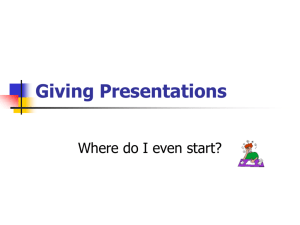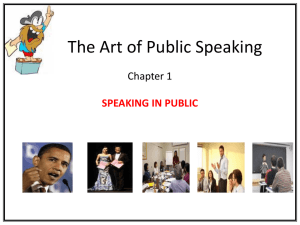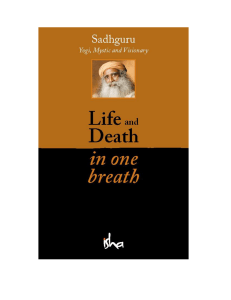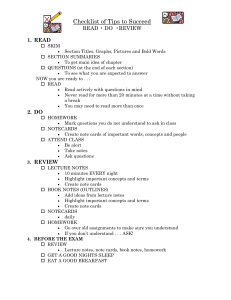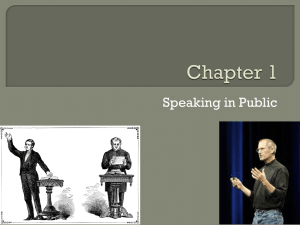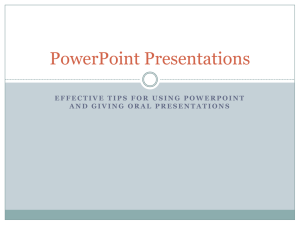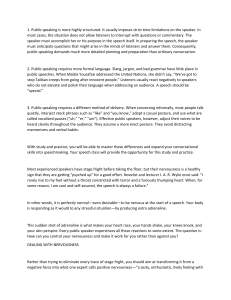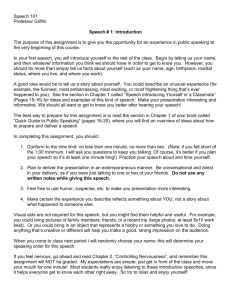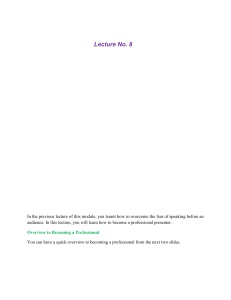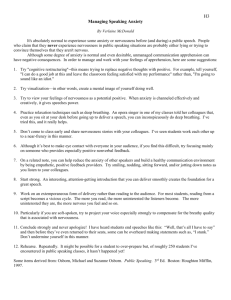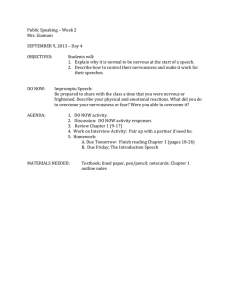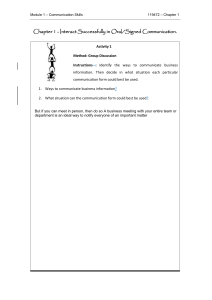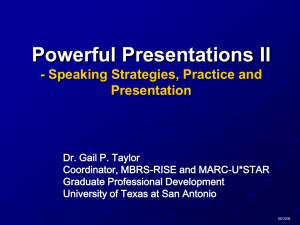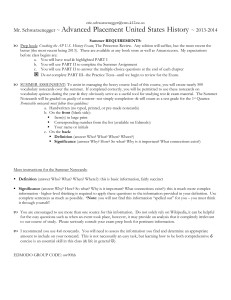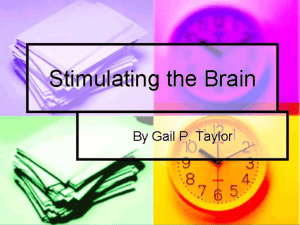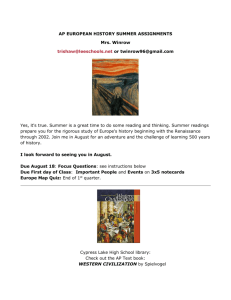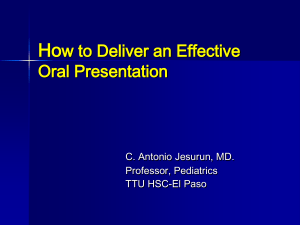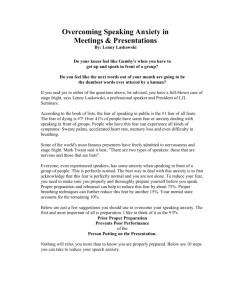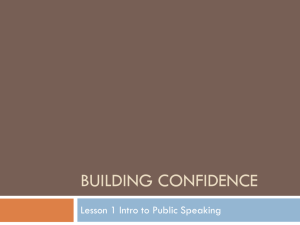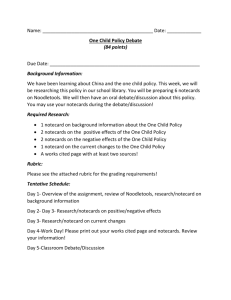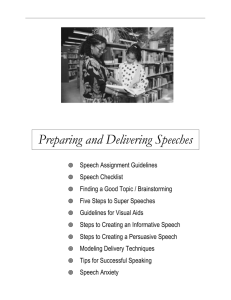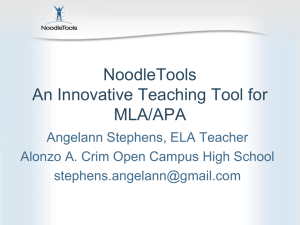Tips Sheet (doc)
advertisement
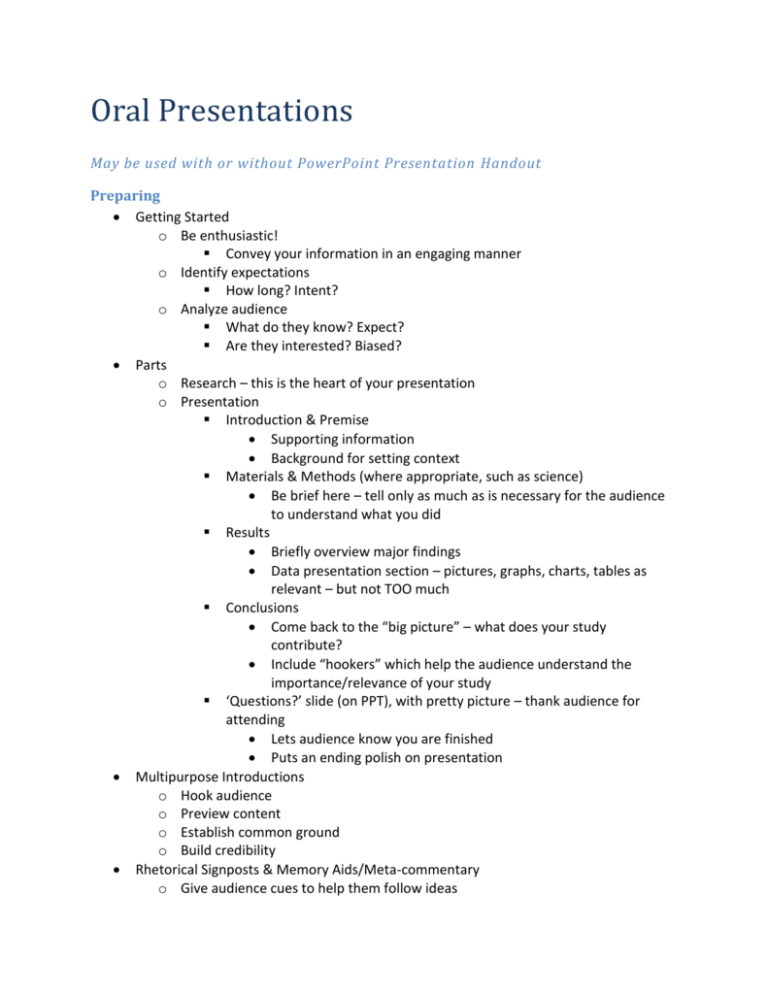
Oral Presentations May be used with or without PowerPoint Presentation Handout Preparing Getting Started o Be enthusiastic! Convey your information in an engaging manner o Identify expectations How long? Intent? o Analyze audience What do they know? Expect? Are they interested? Biased? Parts o Research – this is the heart of your presentation o Presentation Introduction & Premise Supporting information Background for setting context Materials & Methods (where appropriate, such as science) Be brief here – tell only as much as is necessary for the audience to understand what you did Results Briefly overview major findings Data presentation section – pictures, graphs, charts, tables as relevant – but not TOO much Conclusions Come back to the “big picture” – what does your study contribute? Include “hookers” which help the audience understand the importance/relevance of your study ‘Questions?’ slide (on PPT), with pretty picture – thank audience for attending Lets audience know you are finished Puts an ending polish on presentation Multipurpose Introductions o Hook audience o Preview content o Establish common ground o Build credibility Rhetorical Signposts & Memory Aids/Meta-commentary o Give audience cues to help them follow ideas Numbers Old-to-new transitions Parallel sentence structure Repeat key words/ideas Restate thesis as transition to new idea Group set of ideas together under single heading Give short internal summary Explain why telling them specific information o Strategies to Highlight Important Points Repeating/reiterating Key words/vocab Flagging “If you remember just one thing…”, “The take-home point is…” Doing the unexpected Humor, anecdote, changing tone/volume, attention-grabbing visual, getting audience involved Presenting Delivery DOs o Breathe o Appear confident, knowledgeable and enthusiastic o Speak slowly & clearly o Maintain good eye contact – regularly “sweep” the audience with your gaze and stop to make eye contact briefly o Occupy the space – don’t hide behind a podium o Stand up straight o Use natural hand motions for emphasis o Be prepared for Q&A o Relax and TRY TO HAVE FUN! Delivery DON’Ts o Let nervousness distract audience o Speak too quickly o Read directly from script Using PPT slides guide you, so change up the way you say the same thing o Pace, rock, slouch, tap your hands or feet, twirl your hair, or adjust clothes o Constantly use distracting hand gestures o Chew gum, eat, drink o Repeat stalling words (Um, er, uh, basically, you know, like) o Speak with rising inflection (as if asking a question) Notecards o Format notes with bullet points & important words highlighted (to reference easily) o If you have a script, convert it to notes to resist the temptation to read it. o To keep track of presentation length, remember that a typed, double-spaced page will take about 2 minutes to read Practice, Practice, Practice o Do a test run in a mirror o Demonstrate presentation for a friend o Videotape it o Use notecards & time it Overcoming Nervousness o Being well prepared is the best way to overcome nervousness o Practice, practice, practice o Browse books on public speaking to help with nerves and delivery o “A survey of more than 2,500 Americans revealed that people feared public speaking before a group more than death. Amazing as it may seem, many Americans appear to consider public speaking a fate worse than death.” Stephen E. Lucas, The Art of Public Speaking o DON’T be one of these!
